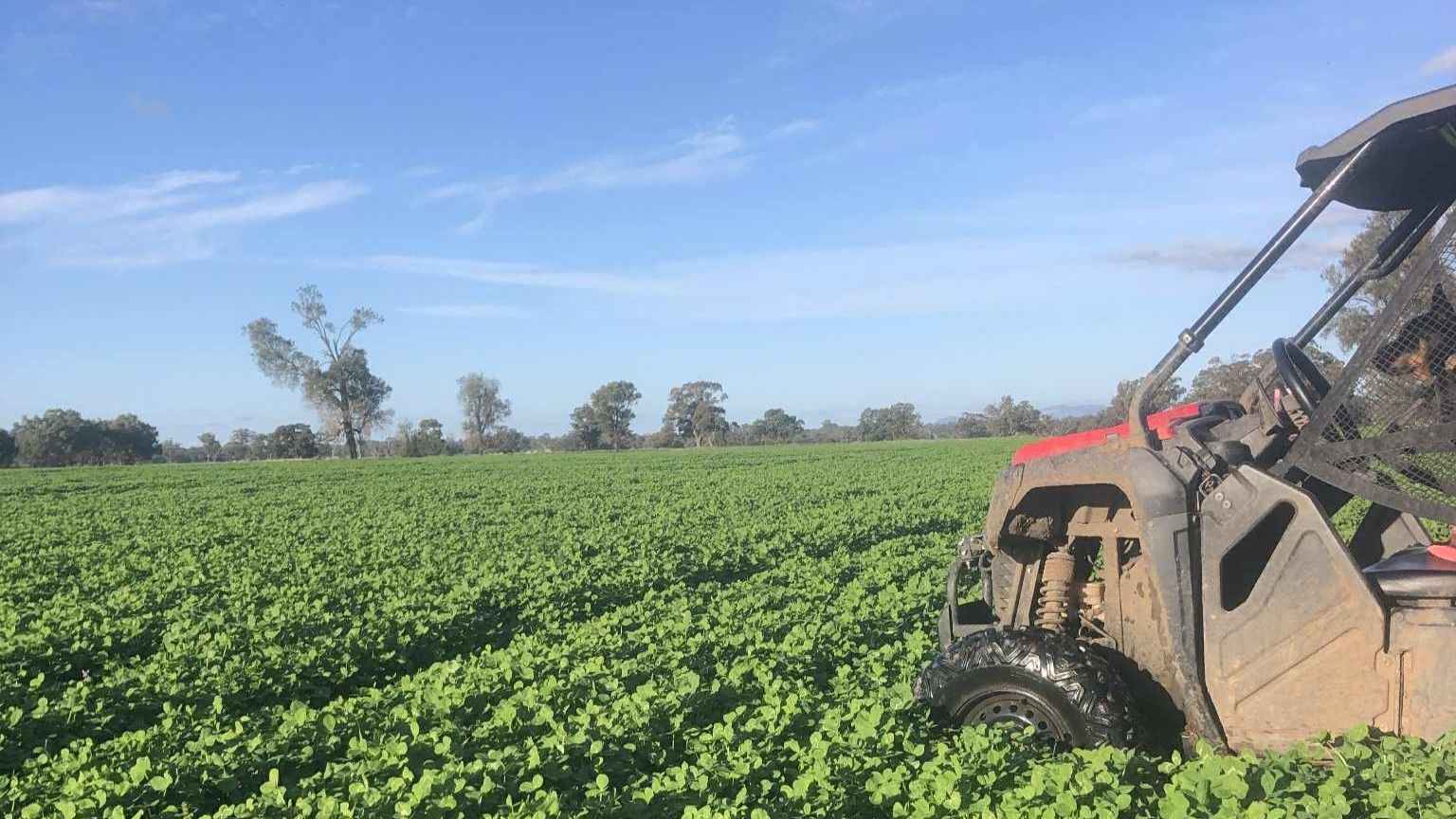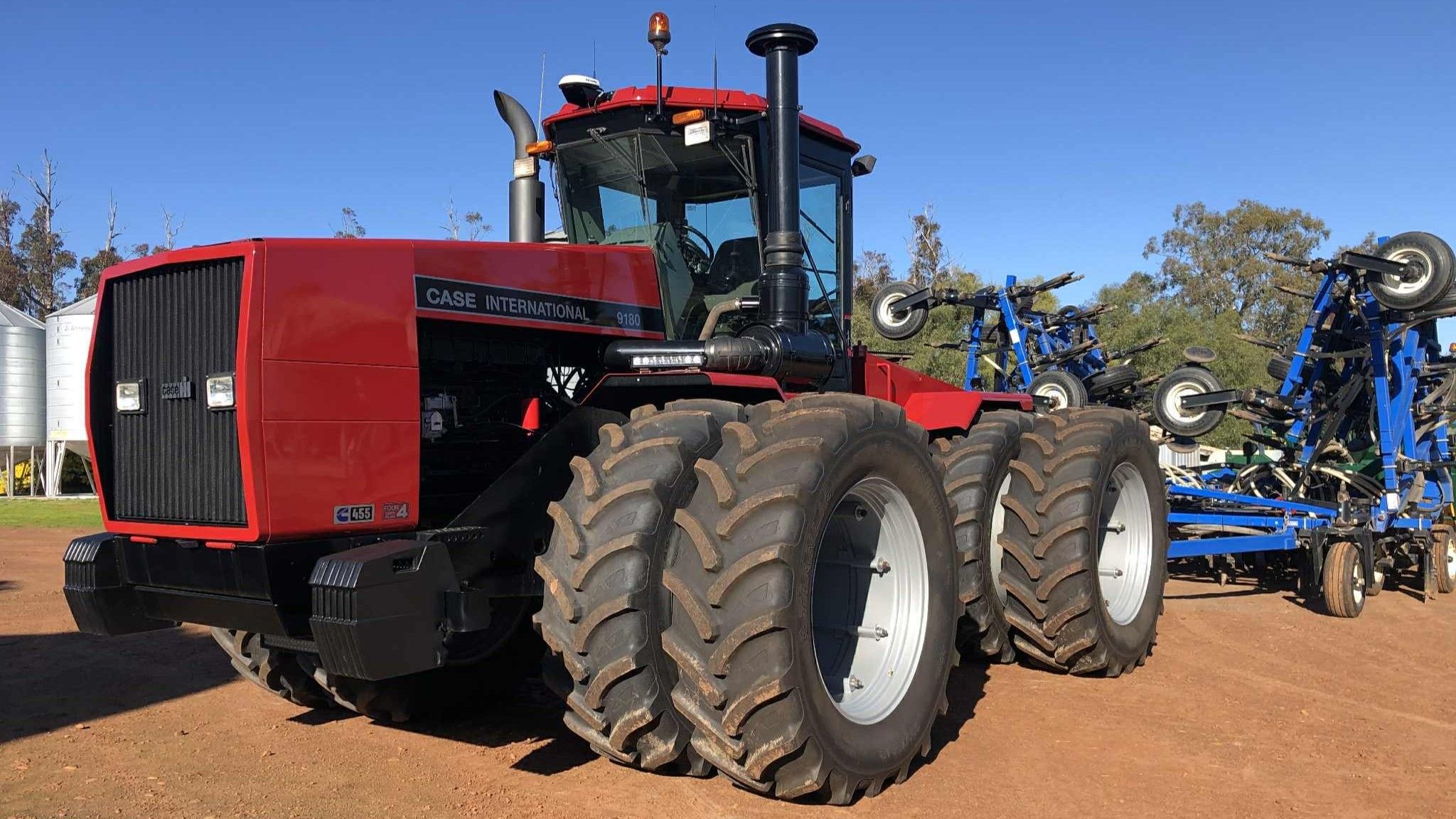Hi, I’m Russell Heard and I farm with my wife Leoni and our small team across two properties south and southwest of Horsham in Wonwondah, Victoria. We crop around 1800 hectares and run a small terminal lamb enterprise that complements our cropping program.
We grow wheat and canola as our main crops, with faba beans grown speculatively depending on the season. We’ve also grown milling oats in the past, but have scaled that back due to weed pressure. We produce clover hay for the domestic dairy and beef markets, with most of it heading to Gippsland or the South Coast.
This season has been one of the most challenging I’ve seen. We had a false break around Anzac Day, and it was nearly 10 weeks before we saw crop emergence. The wind has been relentless – sandblasting events have caused significant damage across the region. I’ve never seen anything like it.
We had to resow about 60 hectares of canola due to wind damage. The sand filled in our press wheel trenches and cut the crop off. Some growers resowed three times. Thankfully, our press wheel tine system helped us avoid the worst of it.

Our soils are incredibly variable, with black clays, duplex loams, hard-setting loams, and sands – sometimes all in one paddock. We use Ag Leader’s AgFiniti platform for yield mapping and decision-making, which helps us understand our paddocks better and work towards variable rate applications in the future based on that data, which won’t reduce costs necessarily but hopefully target them better.
My son Lachlan, currently studying at Marcus Oldham with the intention to return home to the farm post-studies, is passionate about technology and keeps a close eye on our farm data, even from afar. He’s already questioning my decisions based on what he sees on the platform!
We’re watching drone-mapped summer spraying with interest. Lachlan recently did work experience with a company trialling drone-to-sprayer mapping. If it works, it could save growers significant money and reduce the need for expensive camera sprayers.
Whilst we aim to farm sustainably, we still burn stubble in some paddocks to manage slugs, snails and mice, especially when sowing canola vs sowing into heavy cereal stubbles. Stubble burning is not ideal, but it’s a management tool we need in our system.

Over the last 35 years, our local community has changed a lot. Where we once had a school, church, and footy club, now we just have the local hall. But being close to Horsham helps us stay connected.
Leoni is the backbone of our business, she manages all the admin and our household, which is no small task these days. Our daughter Ellie is currently studying a nursing degree, and our twins Prue and Lexie are finishing year 12, so it’s a busy time at home for us. We also have one full-time and one part-time employee. Labour availability has been a challenge in more recent years, but we’ve been lucky with our team.
The market is tough right now. Cereal prices are down, and input costs are high. Canola is the shining light, with some potential for upside. We’re hoping for a money-making rain in the next 10 days, which could make all the difference.
I’m proud to be an Australian grain grower because we’re clean, green, and unsubsidised. We compete on the global stage without the support many other countries receive, and that says a lot about the resilience and innovation of our industry.
